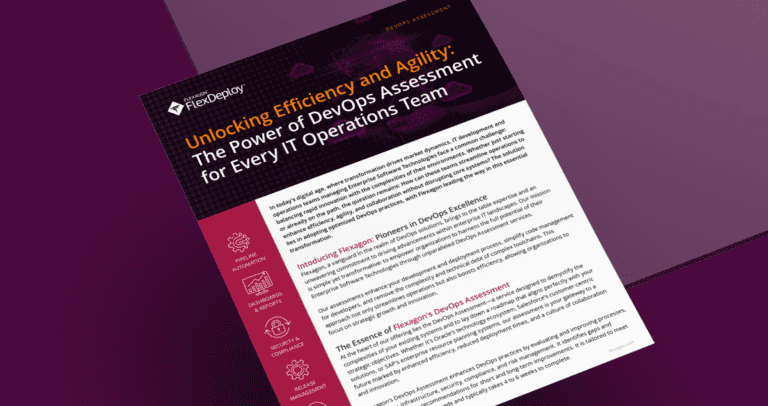Like other industries, IT needs to be more agile to keep up with the speed of business today. The need to get software to market faster is causing more companies to bring DevOps into their enterprises. Over the last five years, DevOps adoption has grown from 54% in 2013 to 78% in 2017.¹
As DevOps increases in prevalence, companies are becoming well-versed in the business value of bringing together IT development, operations and QA teams to deliver software faster, at higher quality and with reduced costs and risks. They understand the benefits of automating, standardizing and accelerating provisioning, build, deploy and release tasks across environments.
With the business case made, attention is now moving toward tools. Specifically, which DevOp tools should you bring into your business? To find the answer, you need to evaluate your business, including your current processes and how you want to improve them.
Here are three steps to help your business find the best DevOps tools to decrease your time to market and improve software quality.
Step 1: Audit Current Processes, Requirements, and Tools
DevOps is as much a culture as it is a practice. That means it will not only change how your team thinks about software delivery, it will transform the practices they adopt to get the work done. It will improve collaboration between teams and create a more dynamic environment in developing and updating apps.
To make the transformation less stressful and understand the tools you need, you must understand current processes, procedures, and standards within the entire software delivery lifecycle. Evaluate the tools you’re currently using as well. What source control management system, testing tools, and other technology is integral to your processes? What tools could you consolidate, replace, or eliminate completely?

By performing a comprehensive audit, you’ll identify commonalities between the groups involved, determine requirements, and develop a common set of objectives that can be used when considering the right tools to bring on board. For example, if your teams use containers, you should look for DevOps tools that support containers.
Step 2: Evaluate Capabilities
For DevOps practices to be successful, enterprises need tools that will augment capabilities, reconcile gaps, and integrate single-point solutions.
To find opportunities for your business, start by evaluating capabilities throughout the entire software delivery lifecycle, especially during the build, deploy and release phases. By undergoing this assessment, teams can prioritize the improvements needed before determining which tools can drive such enhancements.
For example, companies juggling multiple platforms may need to address tool sprawl. These companies might want a single platform that covers the entire software delivery lifecycle, making it easier for teams to collaborate in a single place. A comprehensive DevOps tool can also reduce costs.
As a leader in DevOps solutions, we offer a DevOps Assessment tailored to revolutionize your IT operations, ensuring you’re always a step ahead.

Step 3: Identify Your Biggest Pain Points
DevOps allows IT to drive change faster than ever before, especially when it comes to minimizing common problems. Take a closer look at your current processes and the problems that come up frequently like deployment errors or a lack of visibility into the delivery pipeline.
DevOps tools can help you solve these and other issues you may face. Deployment errors that come from manual processes or poorly written scripts might be solved through automation. The improvements can increase the speed of development as well as eliminate production outages. You can also reduce the duration and impact of failed deployments by using rollback features to return to a previous working version.
Identify your business’s biggest software development and delivery problems and potential features or capabilities DevOps tools could use to solve them. Those will be some of the most valuable things to look for when you’re evaluating different platforms.
Choose DevOps Tools that Solve Key Problems in Your Processes
Despite being relatively new, the DevOps space is crowded. There are numerous tools you can use to enhance your processes, reduce time to market, and improve quality. Selecting the right DevOps tools from such a large landscape can be a complex undertaking. Thinking through these steps first will narrow the field to the tools that will work best with your business.
Sources:
¹https://www.rightscale.com/press-releases/rightscale-2017-state-of-the-cloud-report-uncovers-cloud-adoption-trends




